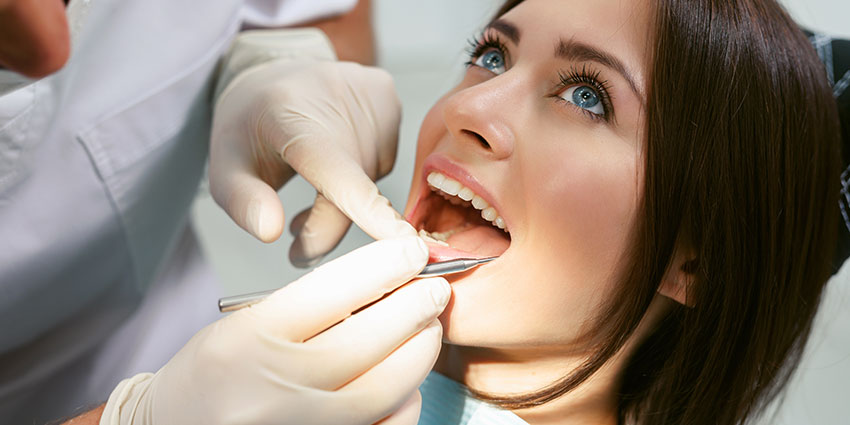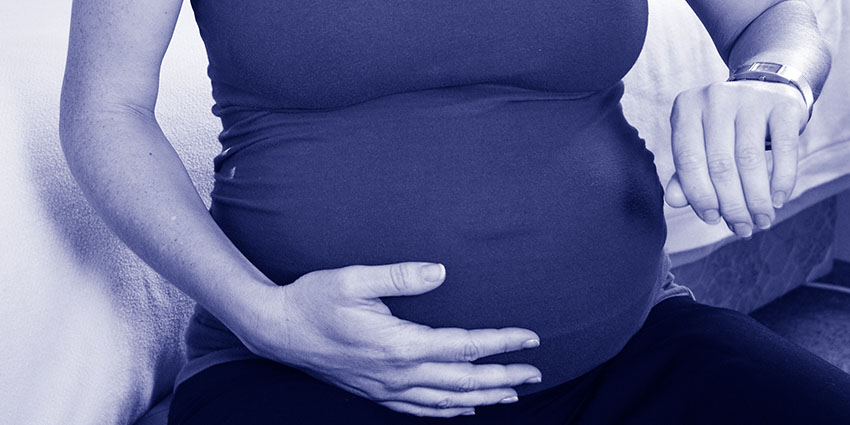What is polycystic ovary syndrome?
Polycystic ovary (or ovarian) syndrome, also known and abbreviated as PCOS, is a gynecologic condition that may affect women during their reproductive lifetime. This condition was once called polycystic ovarian disease. However, a syndrome is a more accurate description since the condition may manifest with a group of the same symptoms. The woman may experience some or all these symptoms which can negatively affect the quality of her life.
Cause of PCOS
No one knows the cause of PCOS. There is no obvious genetic reason for this condition. Obesity does not cause PCOS, though 80% of PCOS patients are obese. There is no environmental agent or family tendency that is directly related to the condition. One problem that seems to be linked to this syndrome is insulin resistance. PCOS is frequently accompanied by production higher “male hormone” (androgen) blood levels which have an impact on the woman’s menstrual cycle and her appearance.
Symptoms of PCOS
What symptoms are connected to PCOS?
1. Menstrual cycle problems
Irregular menstrual cycles or heavy menstrual cycles are very common with PCOS. There are some cases in which the woman may not have any sign of her menstrual cycle, known as amenorrhea. Higher levels of testosterone can stop the menstrual cycle from occurring on a predictable basis. This hormonal elevation can suppress ovulation which could be a major problem for the women who desire to achieve pregnancy. Pelvic pain may accompany the abnormal bleeding.
2. Hair problems
PCOS is associated with higher levels of the male hormone (as testosterone) in the woman’s body. Commonly known in general as androgens, these hormones lead to the deeper voice and facial hair that men typically possess.
It is normal for a woman to have a small amount of the male hormone. However, increased amounts of this hormone may result in increased hair growth. This condition is known as hirsutism which is diagnosed with the distribution of dark and coarse hair that is commonly on the face, middle of the chest, abdomen, and extremities.
In extreme cases, hair loss and bald spots (alopecia) may be a result of the higher male hormone effects. Please be aware that different families and ethnicities may naturally and normally have more or darker hair than others. Consider the traits of female relatives, too.
3. Skin problems
Oily skin and acne are also common symptoms of PCOS. These problems are also a result of the higher male hormone levels. Another common word for the category of male hormones is androgens. You may read other references to the androgenic effects on the woman’s body which means that the higher amount of male hormone leads to the symptoms.
4. Obesity
One of the most common challenges with PCOS is unplanned weight gain. PCOS is related to insulin resistance in the woman’s body. Normally, our body produces insulin to metabolize the food into sugars that can be used for energy and body function. If the body is “resistant” the insulin that it produces, the body will try to make more insulin. That results in more storage of sugars (glucose) into cells. Increased sugars may lead to the weight gain as the sugars are stored.
Other health problems are related to obesity. One of the most common is diabetes. The extra weight in the neck area may result in different breathing with sleep and sleep apnea. Liver and heart disease are also risks of obesity.
About 80% of women with PCOS are obese. That leaves 1 of 5 women with PCOS who can be of normal size but still experience the problematic symptoms.
5. Mood changes
PCOS is a challenging condition for women. They have so many symptoms that may interfere with their quality of life. Depression is also commonly associated with women who experience PCOS.
Diagnosis of PCOS
Many women seek medical evaluation and care because of the abnormal menstrual cycles or even problems getting pregnant. There is no single diagnostic test for PCOS. An obstetrics-gynecologic provider is usually the one who performs the assessment to establish the diagnosis. There are several components of the PCOS evaluation:
1. History and Physical exam
A medical evaluation includes learning what symptoms and experience the woman has noted. The history also needs information as past medical evaluation, results, and care.
Physical evaluation begins with vital signs as blood pressure and weight. The physical exam includes evaluation for signs of polycystic ovarian syndrome. The head and neck exam includes evaluation of the skin, hair distribution, and thyroid gland. An abdominal and pelvic exam is also important to document normal or abnormal anatomy.
2. Pelvic Ultrasound
Ultrasound criteria are used to provide a diagnosis of PCOS. The ultrasound of the pelvis looks at the appearance of the ovaries. A woman normally has two ovaries. If one or both of the woman’s ovaries are enlarged, especially with a certain number of small cysts (“follicles”) of a certain size, the diagnosis of PCOS is made. The ultrasound appearance of the uterus is important since abnormal bleeding is also typical with PCOS.
3. Lab work
The gynecologic provider may order several tests that are performed as blood work. The amount of male hormone testosterone is measured. Other general information is helpful for PCOS management as liver function, cholesterol levels, and blood glucose. There are other medical conditions that may cause symptoms like PCOS, so thyroid function and serum prolactin are common additional tests.
Infertility and PCOS
The most common reason for female infertility is PCOS. This condition affects the ability of the ovaries to produce and release a mature follicle (ovulation). PCOS prevents ovulation in over half of women with this diagnosis. A small number of women with PCOS (5-10%) may experience chronic anovulation (lack of ovulation).
There is always hope. To try to overcome the problem with ovulation, the women with PCOS may be able to take a prescribed medication to encourage ovulation at the right time (ovulation induction). These prescriptions are usually prescribed by reproductive specialists because of possible complications such as overstimulation of the ovaries, severe pelvic pain, and multifetal pregnancy.
Weight loss can help PCOS. Ovulation potential and menstrual cycle predictability has been found to improve with a 5-10% weight loss in the obese women with PCOS.
Treatment of PCOS and its symptoms
Treatment depends upon the woman’s symptoms and goals. Some intervention is avoided if she currently desires to become pregnant. Here are some possible treatments offered to women with PCOS:
1. Birth control pills
Combination pills with estrogen and progesterone are often helpful to improve PCOS symptoms. This hormonal therapy can regulate the menstrual cycle and improve the effects of the higher androgens in the body. Then, acne may get better. Extra male hair growth could improve. There is a large variety of different combinations and doses of oral contraceptives, so the gynecologic provider is an important resource to guide and monitor therapy.
2. Weight loss
Believe it or not, PCOS symptoms can be improved by losing weight if the woman is overweight. She doesn’t need to reach a perfect or “ideal” body weight. Some women can get a normal menstrual cycle by losing 5 or 10 pounds. Skin problems and extra hair growth may also get better. The symptoms improve because insulin levels are reduced with weight reduction.
3. Insulin-sensitizing medication
These prescription drugs are most often used to treat adult-onset diabetes. A frequent example is metformin. However, they have been proven to help PCOS symptoms. The medication works by decreasing the blood levels of insulin. The results lead to better insulin sensitivity and better metabolism of the blood glucose. There may be side effects of these medications, usually digestion issues, which increase with the medication amount taken.
4. Spironolactone
This medication can improve the unwanted hair growth in women with PCOS. It is also a diuretic, or “fluid pill.”
5. Skin care
Facial cleansers and other over the counter treatments for acne may be helpful. There are many available hair removal treatments including plucking, professional hair removal with laser treatment, and so forth.
6. Other medical treatment for infertility
These specialized medications are best used and prescribed by reproductive specialists. Aromatase inhibitors as letrozole are now recognized to be Superior to help in the stimulation of ovulation. Another medication, clomiphene citrate, has also been used for ovulation. These medications are not used together. Another class of medications are known as gonadotropins which may stimulate ovulation.
7. Surgery for PCOS
Surgery has been used when other interventions have not been successful. Ovarian drilling is a surgical treatment to drain the numerous follicles on the ovaries. Most always, such a treatment is performed with outpatient laparoscopy under general anesthesia. The true success of this procedure is unclear.
Summary
Polycystic ovarian syndrome is a common condition that affects many adult women. The symptoms may affect quality of life and especially interfere with desire for pregnancy. It is important to properly diagnose the condition and seek the expertise of experienced gynecological professionals. Therefore, the woman may have a better chance for a normal life.






